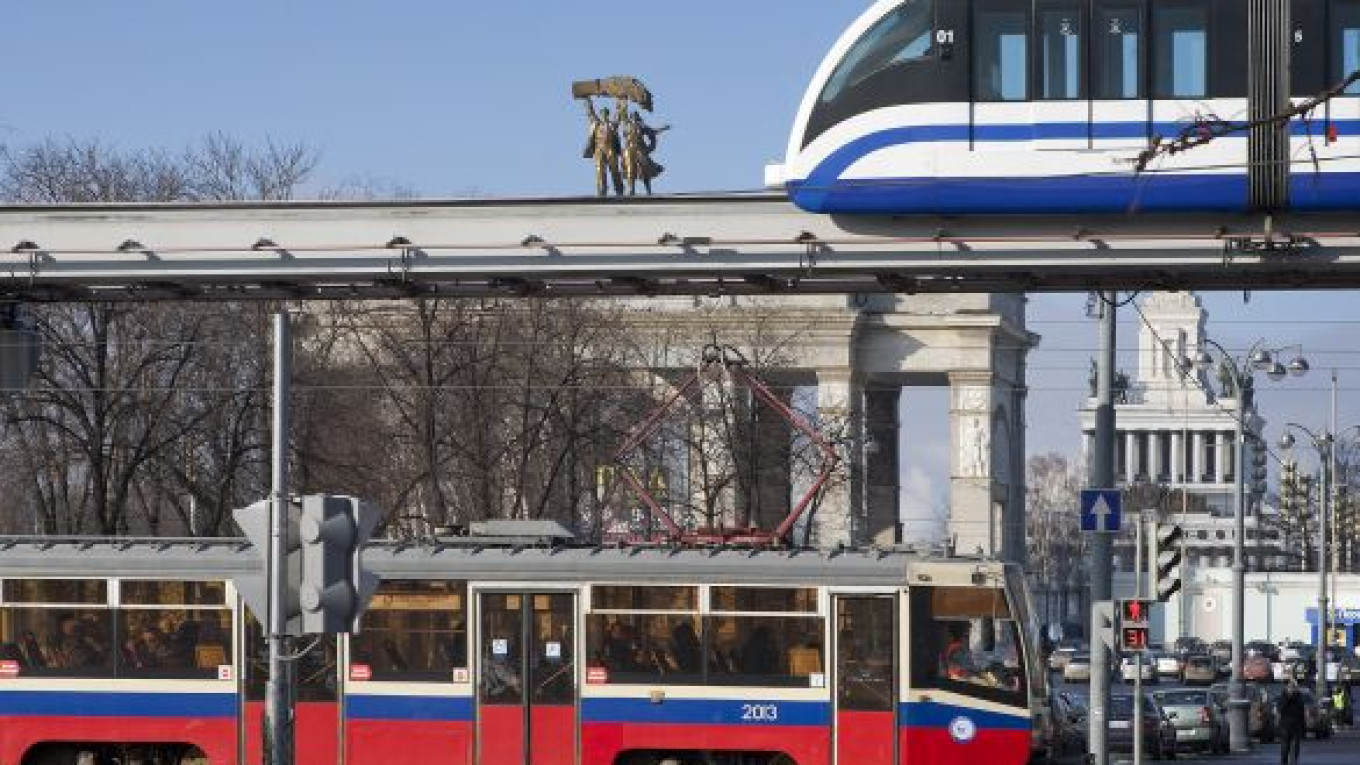City Hall is planning to maintain the spending level of its annual infrastructure program for the metro, other transportation and housing, the city administration said.
The city will increase spending in this year’s Directory Investment Program by less than 1 percent compared with last year, according to figures provided to The Moscow Times by Leonid Bratkin, an aide to Deputy Mayor for Economic Policy Andrei Sharonov. The final planned expenditure for the 2011 program was 353 billion rubles ($12.1 billion), while the budgeted amount for this year’s program is 356 billion rubles, Bratkin said. Documents on official city websites also give that figure for 2012.
Originally, a far costlier program was planned, with the city administration laying out 444 billion rubles for 2012, according to a city document online. It shaved off 87 billion rubles by reducing construction costs during review and planning stages and by conducting bids, the mayor’s office said in a statement.
Bratkin gave similar figures, saying the original 2012 program stood at 448 billion rubles, then was trimmed to 356 billion rubles in February.
More than 60 percent of the 2012 program, or about 220 billion rubles, is allotted for developing the capital’s transit systems, Mayor Sergei Sobyanin announced at an urban planning session on March 11, the city said. According to a city document, work will include extensions of the Light Green, Yellow and Purple lines of the metro system, as well as work on other routes. Just line extensions of various transportation routes take up a couple of pages of the plan.
More lots for trolleys and buses will be constructed in southeast Moscow and other areas, and the city will fork over about 13 billion rubles to buy new city buses.
One unknown is how much of the allotted funding will actually be realized. Last year, only about 80 percent — 284 billion rubles — of the overall investment program had been spent by Dec. 31, 2011, Bratkin said by e-mail.
Mikhail Blinkin, director of the Institute of Transportation Economics and Policy at the Higher School of Economics, said in a telephone interview that improving Moscow’s metro system is the most important piece of meeting the city’s many transportation needs. The next most important part of city transportation is passenger rail, Blinkin said.
This year’s Directory Investment Program also increases the amount spent on housing construction by almost 40 percent, with the amount rising to 58 billion rubles, Sobyanin said.
The latest program document suggests that the city might radically ramp up its spending in 2013 and 2014. The figures for those years are almost 25 percent higher, with 441 billion rubles tentatively planned for next year and 451 billion rubles for 2014. Those programs also substantially hike the city’s investment in transportation, with a nearly 30 percent increase projected for 2013.
A Message from The Moscow Times:
Dear readers,
We are facing unprecedented challenges. Russia's Prosecutor General's Office has designated The Moscow Times as an "undesirable" organization, criminalizing our work and putting our staff at risk of prosecution. This follows our earlier unjust labeling as a "foreign agent."
These actions are direct attempts to silence independent journalism in Russia. The authorities claim our work "discredits the decisions of the Russian leadership." We see things differently: we strive to provide accurate, unbiased reporting on Russia.
We, the journalists of The Moscow Times, refuse to be silenced. But to continue our work, we need your help.
Your support, no matter how small, makes a world of difference. If you can, please support us monthly starting from just $2. It's quick to set up, and every contribution makes a significant impact.
By supporting The Moscow Times, you're defending open, independent journalism in the face of repression. Thank you for standing with us.
Remind me later.


